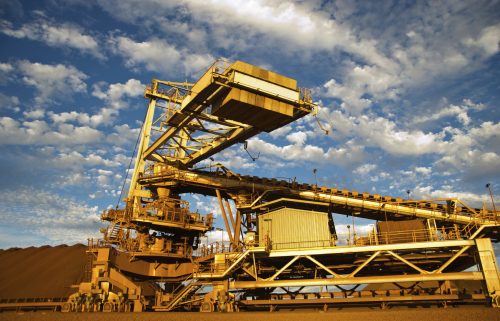Situation
Bucket wheel reclaimers are used to reclaim stacked ore from stockpiles. They play an integral role in the iron ore industry.

Bucket wheel reclaimers are used to reclaim stacked ore from stockpiles. They play an integral role in the iron ore industry.
Numerous instances of oil overheating had been recorded and being considered as the possible root cause of two hydraulic pump failures.
The study was concluded from the perspective of designing a new system and comparing this cooling requirement to the actual cooling system currently installed to confirm if the root cause of the overheating is the cooler size.
The scenarios were modelled and simulated in Pressure Dynamics’ Multi-functional ‘digital twin’ technology. Subsequent simulation and analysis was conducted to examine the effects of decreased cooling efficiency of the air coolers.
The analysis determined that if the efficiency of the cooler drops lower than 80% (e.g. the cooler is covered by dust and/or poorly maintained), the operating oil temperature exceeds the maximum acceptable level. Pressure Dynamics consequently recommended preventative maintenance requirements, and costeffective system modifications and upgrades to support system reliability and productivity.
Bucket wheel reclaimers are used to reclaim stacked ore from stockpiles. They play an integral role in the iron ore industry.
Pressure Dynamics was engaged to conduct a thermal analysis of a mine site bucket wheel reclaimer hydraulic drive system as numerous instances of oil overheating had been recorded, and to determine if it was the root cause of two hydraulic pump failures.
Overheated oil in hydraulic systems leads to:
All of the above contribute to poor equipment performance reliability, increased machine down time, and lost production time.
This bucket wheel reclaimer hydraulic system uses two closed loop hydraulic pumps to rotate the hydraulic motor directly mounted to the bucket wheel reclaimer.
Hydraulic oil from each of the charge pumps pushes oil through a filter and air cooler to take the heat generated out of the system.
The study was concluded from the perspective of designing a new system and comparing this cooling requirement to the actual cooling system currently installed to confirm if the root cause of the overheating is the cooler size.
The scenarios were modelled and simulated in Pressure Dynamics’ Multifunctional ‘digital twin’ technology.
To validate the accuracy of the modelling and thermal analysis, the model performance simulation data was compared with available site operations data.
Subsequent simulation and analysis was conducted to examine the effects of decreased cooling efficiency of the air coolers. The design basis of the cooler resulted in oil operating temperatures below 80oC, thus sufficient for the system.
However, it was determined that a reduction of only 20% of cooling capacity shall result in oil overheating – the cooling capacity of the air coolers decrease if the cooler is covered by and/or blocked up with dust (as is typical to the mine environment) or if the coolers are not cleaned and maintained on a regular basis.
Notably, the oil shall overheat after only 3 minutes of steady state operation should cooler capacity reduce by 40%.
The modelling, simulation and thermal analysis determined that the existing cooling system was adequately sized to maintain the maximum oil temperature – at the cooler inlet – below the acceptance criteria, subject to appropriate maintenance and cleanliness of the cooler.
The analysis determined that if the efficiency of the cooler drops lower than 80% (e.g. the cooler is covered by dust and/or poorly maintained), the operating oil temperature exceeds the maximum acceptable level.
Pressure Dynamics consequently recommended preventative maintenance requirements, and cost effective system modifications and upgrades to support system reliability and productivity.
This case study demonstrates Pressure Dynamics’ proficiency in conducting thermal analysis on hydraulic systems. The use of Pressure Dynamics’ innovative proprietary modelling, simulation, and analysis technology combined with engineering and technical expertise resulted in high analytical accuracy, and the breadth of Operations and Maintenance recommendations presented to the client.